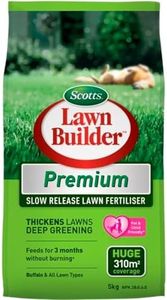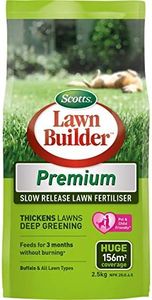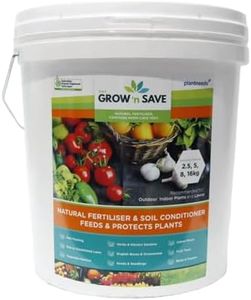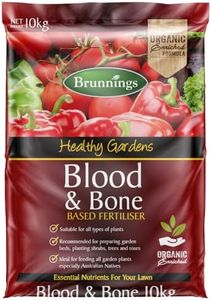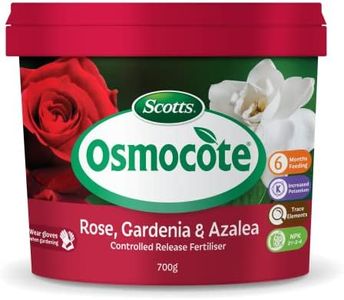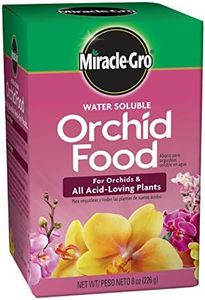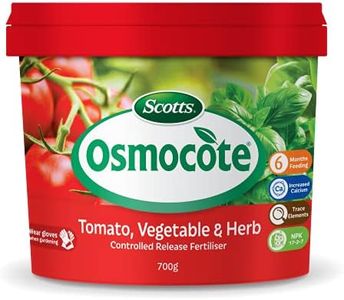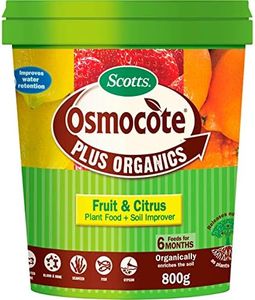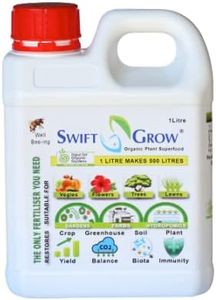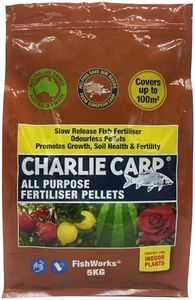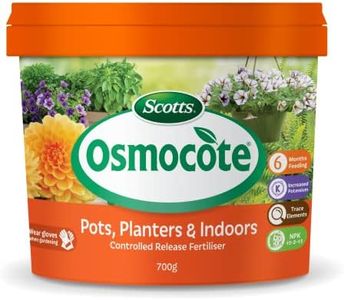We Use CookiesWe use cookies to enhance the security, performance,
functionality and for analytical and promotional activities. By continuing to browse this site you
are agreeing to our privacy policy
10 Best Garden Fertilizer
From leading brands and best sellers available on the web.Buying Guide for the Best Garden Fertilizer
Choosing the right garden fertilizer depends on your specific plants, soil type, and gardening goals. A fertilizer gives your plants the nutrients they need to grow healthy, flower more, and produce better fruits or vegetables. Understanding key fertilizer specifications will ensure you're nourishing your garden in the best way for its unique needs.N-P-K RatioThe N-P-K ratio stands for nitrogen (N), phosphorus (P), and potassium (K), the three primary nutrients in fertilizer. This ratio tells you the percentage of each nutrient, for example, 10-10-10 has 10% of each. Nitrogen is good for leafy growth, phosphorus helps with roots and flowers, and potassium supports overall plant health. Low numbers usually mean a mild, all-purpose fertilizer, while higher numbers are more concentrated and targeted. If you want lush foliage, look for higher nitrogen; for root crops or flowers, choose more phosphorus; and for fruiting or general health, potassium is important. Match the ratio with what your plants need most—vegetables, flowers, and lawns often require different balances.
Fertilizer Type (Granular vs. Liquid vs. Spikes)Fertilizers come in different forms such as granular, liquid, or spikes. Granular fertilizers are slow-release and easy to apply to larger areas like lawns, slowly feeding plants over weeks. Liquid fertilizers act quickly, best for giving a fast nutrient boost and are great for container plants or when plants need quick recovery. Spikes are inserted into the soil for a steady, long-lasting effect, ideal for specific trees or shrubs. Decide on the form based on your garden size, how quickly you want results, and your preferred way of applying—granular for less frequent tasks, liquid for regular boosts, spikes for less hands-on care.
Organic vs. SyntheticYou can choose between organic (derived from natural sources like compost, manure, bone meal) and synthetic (manufactured chemically) fertilizers. Organic fertilizers improve soil structure and feed beneficial microbes but can work more slowly. Synthetics provide nutrients quickly and in precise amounts but can build up salts or harm soil life if overused. If you're aiming for long-term soil health and sustainability, go organic. If you want quick results or have very specific nutrient needs, synthetic might be best. Your gardening philosophy and urgency can help you decide here.
Specialty FormulasSome fertilizers are formulated for specific plant types, such as roses, tomatoes, lawns, or acid-loving plants. These blends tailor the nutrient ratios and sometimes include extra micronutrients just for that plant type. If your garden focuses on one type of plant or if you notice issues like yellowing leaves, a specialty formula can target those needs closely. General-purpose fertilizers are good for mixed gardens, but go for specialty if you’re nurturing something specific or need to fix a particular deficiency.
Release TimeRelease time describes how quickly or slowly the nutrients are made available to plants, labeled as quick-release or slow-release. Quick-release fertilizers work fast, ideal for when you need immediate results, like revitalizing struggling plants, but may require more frequent reapplication. Slow-release types feed plants gradually over time, reducing how often you need to fertilize and lowering the risk of overfeeding. Think about how much attention you can give your garden and how fast you want to see improvements to choose the right release type.

